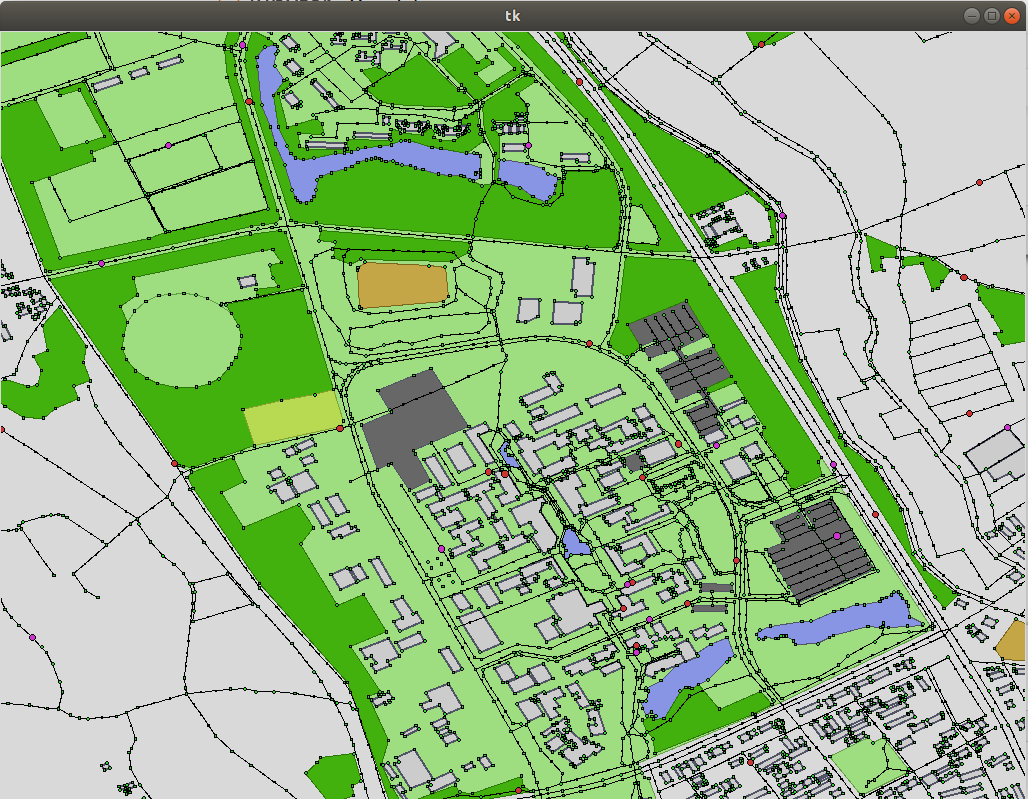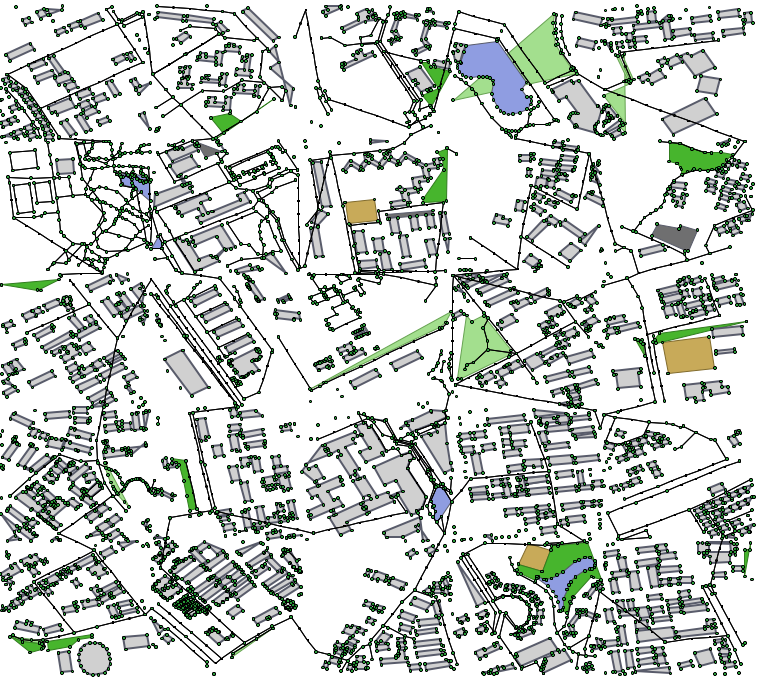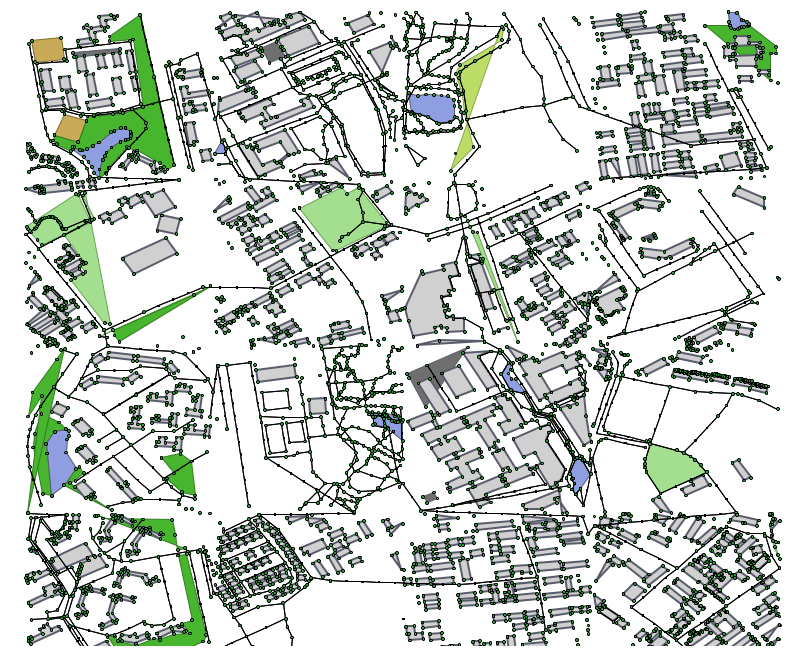Virtual Cities Generation and Simulation
From ants building anthills to humans building high speed train tacks, creatures will modify their environments to improve their living conditions.
By observing and simulating how these creatures live and interact, could we create artificial livable environments? Can we extract from existing cities the "sauce" that marks how humans live in them, and how they make their world really "theirs"?
In this project, we study Procedural Content Generation (PGC) and multi-agent system (MAS) techniques to create artificial environments that are not only realistic when compared to their real world counterparts, but also livable from the point of view of their virtual inhabitants.



Well, as you can see, we still have a long way to go! :-)
But there are several interesting applications for this kind of research:
- Simulation and testing of policies for disaster evacuation (earthquakes, tsunamis, etc);
- Improving our understanding of the relationship between creatures and their environments;
- Imagining not only "life as it could be", but also "the world as it could be";
- Automatic Generation of Content for Videogames;
Papers
- Claus Aranha, Hiromu Matsushima, Hitoshi Kanoh, "Information Exchange Model for Multi-Agent Earthquake/Tsunami Evacuation Simulation", Journal of Natural Disaster Sciences, Vol 38, No 2 (2017.12)
Other information
In the context of this research, I yearly take internship students to participate in the Generative Design in Minecraft competition. Let's use evolutionary systems to create Minecraft cities!
